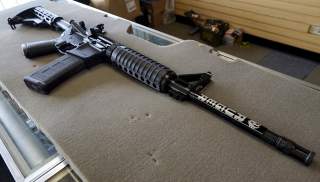This Is What Happens When You Shoot a Kevlar Vest at Point-Blank Range
You will live, but...
Kevlar is some pretty cool shit. It’s made of ultra-strong plastic polymers, is relatively light, can withstand most chemical attacks, and is, obviously, bulletproof.
But about that last thing … just how bulletproof is it, really? To unscientifically test this question, Jeff over at the don’t-try-this-at-home YouTube channel TAOFLEDERMAUS outfitted a dummy with a soft Kevlar vest to see what would happen if you theoretically shot someone at point-blank range while they were wearing body armor.
The vest in the video is a 3A armor level, which is tested to sufficiently withstand nine-millimeter rounds, .44 magnums, and most other handguns. According to industry standards, this level of Kevlar is the best you can get for protecting yourself against blunt trauma injury.
As you can see, at a distance of approximately 45 feet, a nine-millimeter Glock pistol shot at a velocity of 1,100 feet per second was easily deflected by the vest. In slow motion, it appeared to simply absorb the force of the bullet and bounce it off the dummy’s chest.
Tested against the same nine-millimeter ammunition, but in a semi-automatic rifle, the vest was still pretty effective. And by that, I mean if a real human were wearing it, they’d likely be alive. If you look at the shot in slow motion, the force of impact was inarguably stronger, but the Kevlar managed to absorb and deflect the bullet as intended.
Even a 590 shotgun, as the video shows, didn’t stand a chance against the vest. Again, at a distance of 45 feet, none of the rounds of buckshot succeeded in penetrating the body armor.
Now, at point-blank, using a regular handgun, things got a little tricky. The top of the vest did a terrible job at protecting the dummy from the bullet. When shot at one inch from its edge, the body armor crumpled under the force of the ammunition, and sort of folded inward toward the chest. Not good. But surprisingly, a bullet fired at the center of the vest ended up trapped, and never penetrated the back panel of the armor.
Kevlar worked in all of these scenarios (except for the shot at the edge of the vest) by utilizing interwoven strands of plastic polymers to physically block the ballistic trajectory of the bullet. The strands are so strong, the bullet is unable to make a path through the fabric, and all of its energy dissipates outward. Kind of like a soccer ball hitting a goal net.
So there you go. You’ll probably never need this information for the real world unless you’re a murderer or someone who suspects they might get murdered, but it’s reassuring to know that some highly-touted products actually meet their expectations.
This article originally appeared at War is Boring in 2016.
Image: Reuters.

